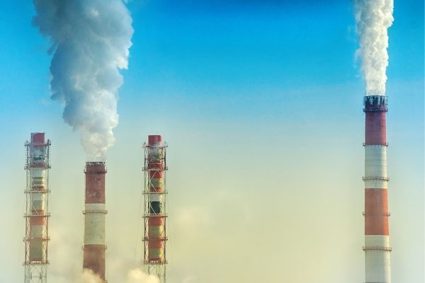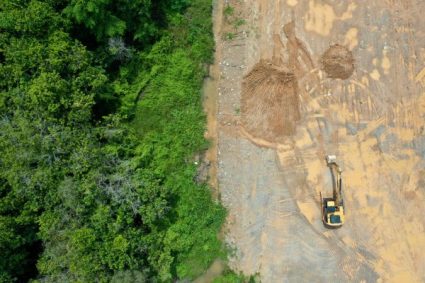AI for the Environment: Save the Planet with AI

In the face of climate change, biodiversity loss, and pollution, our planet is in a state of crisis. As the old adage goes, we can’t manage what we don’t measure.
Fortunately, the rise of artificial intelligence (AI) offers a powerful tool to help us tackle these environmental challenges.
In this article, we will explore various ways AI is being implemented to promote sustainability and protect our environment.
Introduction
As businesses and governments worldwide search for ways to reduce their environmental impact, AI has emerged as a promising solution.
These systems hold great potential in designing energy-efficient buildings, monitoring deforestation, optimizing renewable energy deployment, and more. In the following sections, we will delve into specific examples of AI’s potential to help save the planet.
Reducing Emissions
1. Monitoring and Predicting Emissions
Carbon dioxide levels in the atmosphere have reached unprecedented highs, largely due to human activity. Corporations, which account for the majority of emissions, must reduce their production to mitigate climate change. AI can assist in this endeavor by monitoring companies’ emissions, predicting future emissions, and helping to make effective, cost-efficient adjustments.

A recent study by Boston Consulting Group found that AI could reduce greenhouse gas emissions by 5% to 10% globally by 2030. Among the AI applications are tools to optimize carbon-free energy production operations, such as wind farms, optimize traffic with autonomous vehicles, and predict when equipment will need repair to reduce carbon-emitting failures.
For instance, IBM researchers are using AI technology to work with clients and partners to solve complex climate-related issues. These efforts include reducing the global carbon footprint of cloud workloads and data centers and developing membranes and materials that capture and absorb carbon at the source of emission. Research from Microsoft and PWC further underscores the potential of AI for environmental applications, suggesting that its use could boost global GDP by 3.1% – 4.4%.
To ensure accuracy in emission reduction efforts, it is crucial to invest in high-quality training data for AI algorithms. Without robust and bias-free data, insights may be unreliable, and climate-action decisions may be ill-informed.
2. Real-time Analysis and Global Monitoring
AI-powered platforms, like the United Nations Environment Program’s (UNEP) World Environment Situation Room (WESR), leverage AI’s capabilities to analyze complex, multifaceted datasets. These platforms aggregate and visualize earth observation and sensor data to inform near real-time analysis and future predictions on various factors, including CO2 atmospheric concentration, changes in glacier mass, and sea level rise.
WESR aims to be a user-friendly, demand-driven platform that makes data accessible to government offices, classrooms, mayors’ offices, and boardrooms. The goal is for WESR to eventually become a mission control center for planet Earth, where all vital environmental indicators can be seamlessly monitored to drive actions.

Improving Conservation Efforts
1. Wildlife Conservation
As the planet warms, it becomes less habitable for humans and other species. Over 10,000 species on the IUCN Red List of Threatened Species are affected by climate change, increasing their likelihood of extinction. AI can play a crucial role in tech-led conservation efforts.
Companies are using AI for wildlife conservation by capturing and analyzing large amounts of data on various species. Unmanned aerial vehicles (UAVs), for example, are employed to record and monitor African wildlife. The AI then analyzes the data for key insights into the species, landscape, cultural relevance, and human influence.
By utilizing AI-generated information, conservationists can better understand animal behavior, predict their needs, and preserve biodiversity. For AI to be effective in conservation, it should work in tandem with human conservationists. Rather than replacing them, AI should support their efforts to ensure a comprehensive understanding of the species’ environment, needs, and patterns.

Protecting Agriculture and Farming
1. Climate Change’s Impact on Agriculture
Agriculture is essential for the future of our population, but climate change threatens our food supply. As temperature changes result in global droughts and floods, farming practices become increasingly vulnerable. NASA studies predict that certain crop species, such as maize, will see yield declines of up to 24% due to climate warming.
Furthermore, the global population continues to grow, necessitating a 60% increase in food production by 2050 to feed an additional two billion people. MarketsandMarkets estimates spending on AI in agriculture will grow from 4 billion in 2026.

2. AI-Powered Pest Control and Disease Management
Companies like NatureSweet are already relying on AI-powered pest control and disease applications to manage their crops. AI has helped improve greenhouse tomato yields by 20% while benefiting consumers and the environment. By carefully monitoring threats to crops, the company can better protect plant and soil biodiversity.
Another app, Climate Basic, uses AI to analyze agricultural data such as local temperature and erosion records, expected precipitation, and soil quality. This information enables farmers to maximize yields for each plot and allocate resources more accurately. For example, farmers can avoid watering affected crops if rain is expected.
3. Ensuring Effective Agricultural AI
To successfully harness AI in agriculture, companies must invest in robust data. Adequate training and continuous improvement of datasets are essential for effective and accurate AI-powered solutions in agricultural planning.
Monitoring Methane Emissions
The International Methane Emissions Observatory (IMEO) is a UNEP-led initiative within the WESR digital ecosystem that uses AI to revolutionize the approach to monitoring and mitigating methane emissions. IMEO operates as a global public database of empirically verified methane emissions, with AI strategically interconnecting this data with action on science, transparency, and policy to inform data-driven decisions.
David Jensen, coordinator of UNEP’s Digital Transformation sub-programme, explains that “IMEO’s technology allows us to collect and integrate diverse methane emissions data streams to establish a global public record of empirically verified methane emissions at an unprecedented level of accuracy and granularity.”
Reducing the energy sector’s methane emissions is one of the quickest, most feasible, and cost-effective ways to limit the impacts of climate warming, and reliable data-driven action will play a significant role in achieving these reductions.
Optimizing Renewable Energy Production
AI can optimize renewable energy production by analyzing data from various sources, such as weather forecasts, energy consumption patterns, and equipment performance. This information allows AI systems to predict energy demand, adjust production levels, and schedule maintenance to maximize efficiency and minimize waste.
Examples of AI applications in renewable energy include optimizing wind farm layouts to capture the most wind energy and adjusting solar panels to follow the sun’s path throughout the day.
Designing Energy-Efficient Buildings
AI can be employed in the design of energy-efficient buildings by analyzing factors such as building materials, insulation, and passive solar design. This information enables architects and engineers to optimize building designs for reduced energy consumption and improved occupant comfort.
Additionally, AI can help monitor and control building systems, such as heating, ventilation, and air conditioning, to ensure efficient energy use and maintain a comfortable indoor environment.
Monitoring Deforestation

Deforestation contributes significantly to greenhouse gas emissions and biodiversity loss.
AI can help monitor and combat deforestation by analyzing satellite imagery and other data sources to detect changes in forest cover and track illegal logging activities.
By identifying areas of concern, governments, and conservation organizations can take targeted action to protect forests and their ecosystems.
Waste Management and Recycling
AI can also play a role in waste management and recycling efforts. For example, AI-powered robots can sort waste more efficiently and accurately than humans, improving recycling rates and reducing the amount of waste sent to landfills. Additionally, AI can help optimize waste collection routes, ensuring efficient use of resources and reducing greenhouse gas emissions from waste collection vehicles.
Climate Modeling and Forecasting
Climate modeling and forecasting are crucial for understanding the impacts of climate change and informing mitigation and adaptation strategies. AI can help improve the accuracy and efficiency of climate models by analyzing vast amounts of data and identifying patterns and trends. This information can then be used to predict future climate conditions and guide decision-making for climate action.
Conclusion
As we continue to grapple with the environmental challenges facing our planet, AI for the environment offers a promising avenue for mitigating the impacts of climate change, preserving biodiversity, and promoting sustainability. By leveraging AI’s capabilities, businesses, and governments worldwide can make more effective decisions to protect the environment, ensuring a healthier planet for future generations.

Related Artificial Intelligence
10 Revolutionary Applications of AI in Household Settings
The Ultimate Data Science vs Machine Learning Guide
The Ethics of AI: Balancing Advancements with Responsibility
How To Become An Artificial Intelligence Engineer
100 Applications of AI and Machine Learning
30 Careers That Surprisingly Use AI & Machine Learning
From Sci-Fi to Reality: Exploring the Evolution of Artificial Intelligence
AI Programming for Beginners: A Step-by-Step Guide to Get You Started